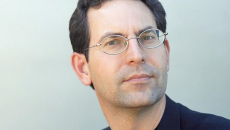Government & Policy
Access to healthcare is underpinned in large part on a health consumer’s access to information about available health care services, their location, price, and if the patient is very fortunate to glean, quality.
'PwC is placing a strategic bet that healthcare in America will continue to move to value-based payment and outcomes will continue to evolve in the U.S. under a President Trump. It's a sound bet.'
Nurses, pharmacists, doctors rank highest on the honest and ethics in U.S. professions for 2016.
President-elect Trump wants to bring down drug prices
Sue Schade explains why she will approach the next four years with an open mind.
John Halamka, MD, served the Bush administration for four years and the Obama administration for six. Change in Washington happens incrementally, he says: There is always an evolution, not a revolution, regardless of speechmaking hyperbole.
Maybe it's time for a discussion about what people want from the U.S. healthcare system.
Recently, planners of an upcoming event asked me some questions and here are the answers:
1.
How can I not comment on the most watched Presidential debate ever? There were 84 million people watching the debate.
"As I've said many times, one of the great challenges we have is that the 2015 Edition final rule has an enormous scope extending beyond meaningful use with the notion that it can be coupled to every government healthcare IT program," writes John Halamka, MD.









